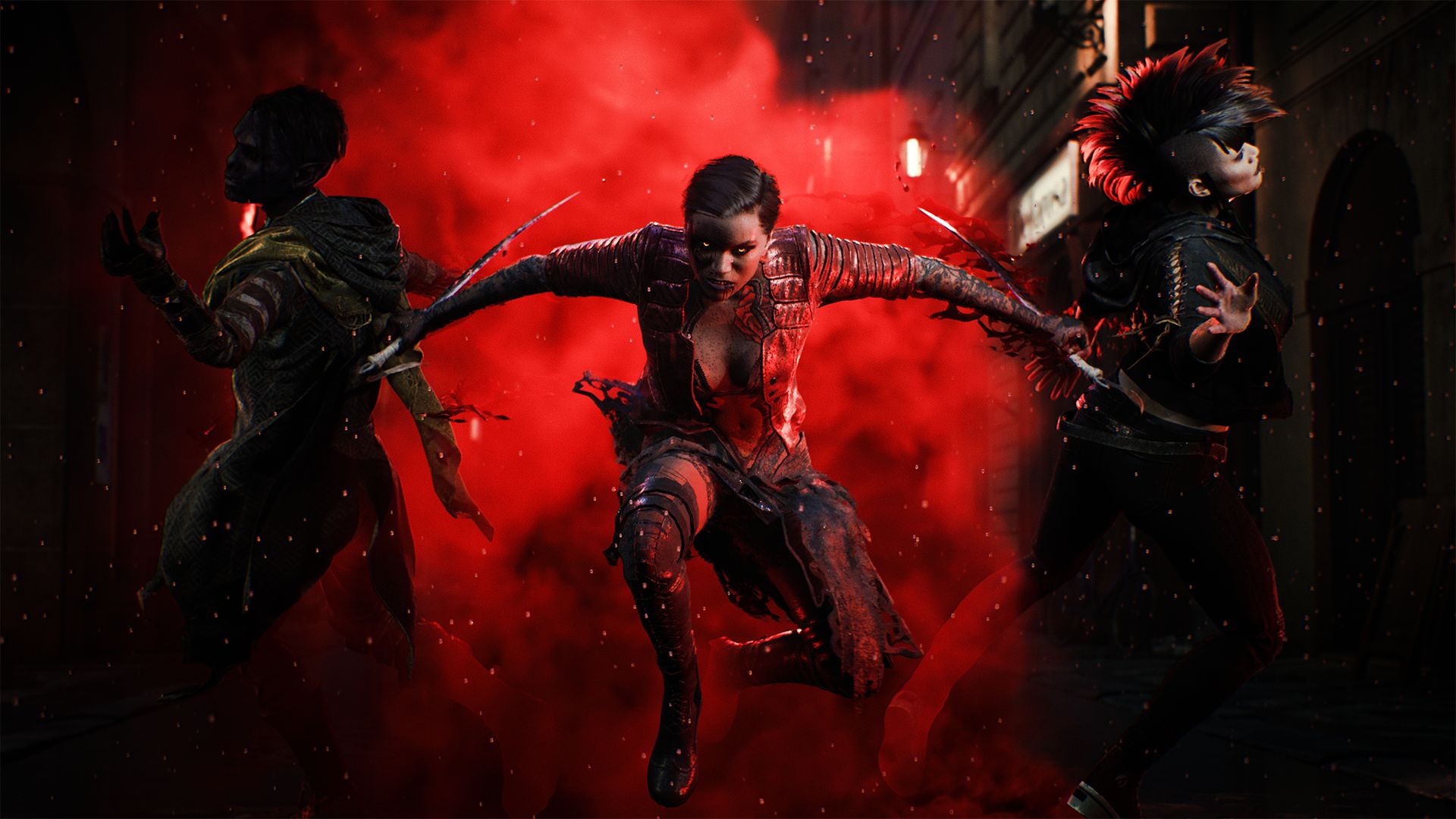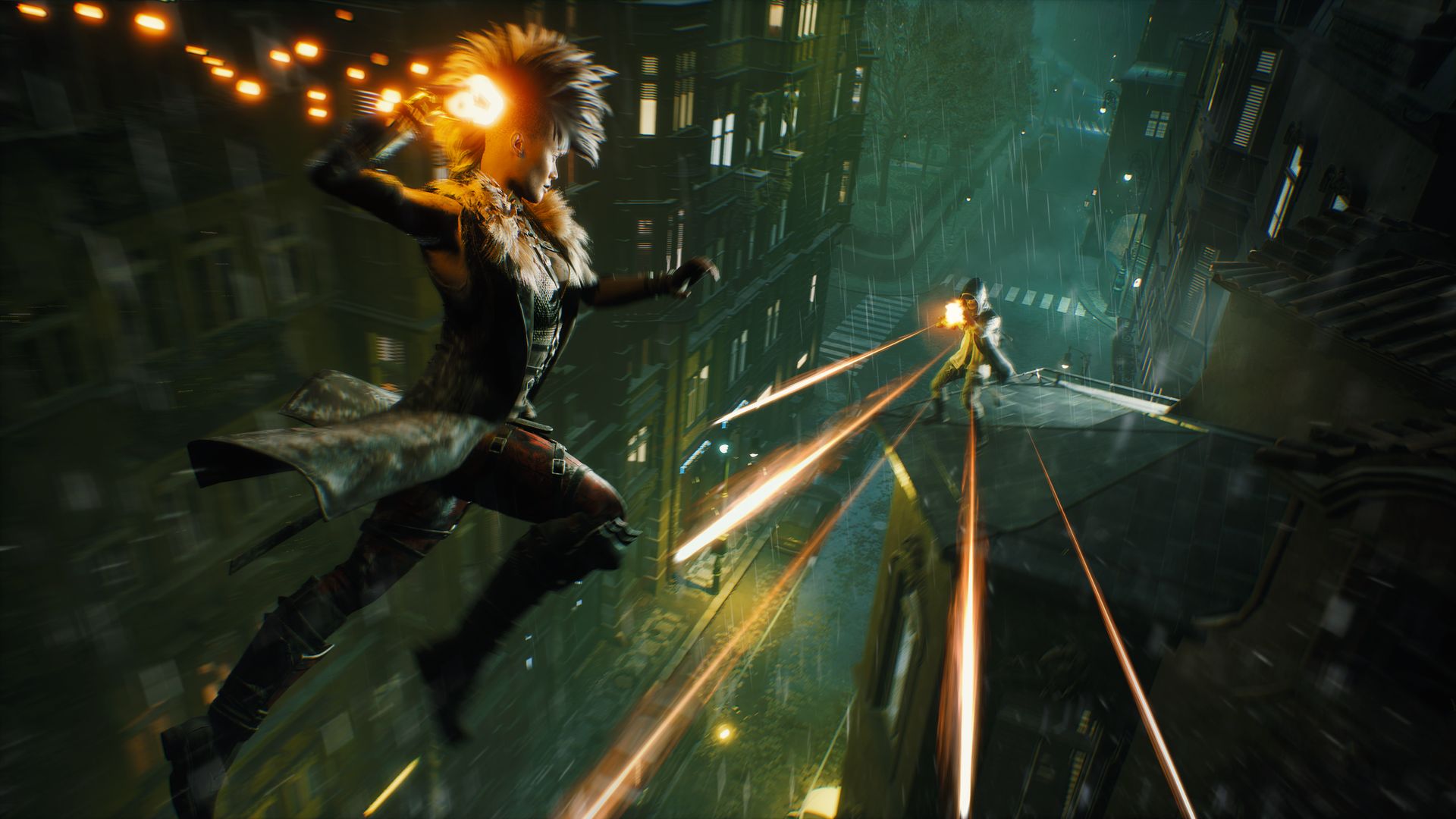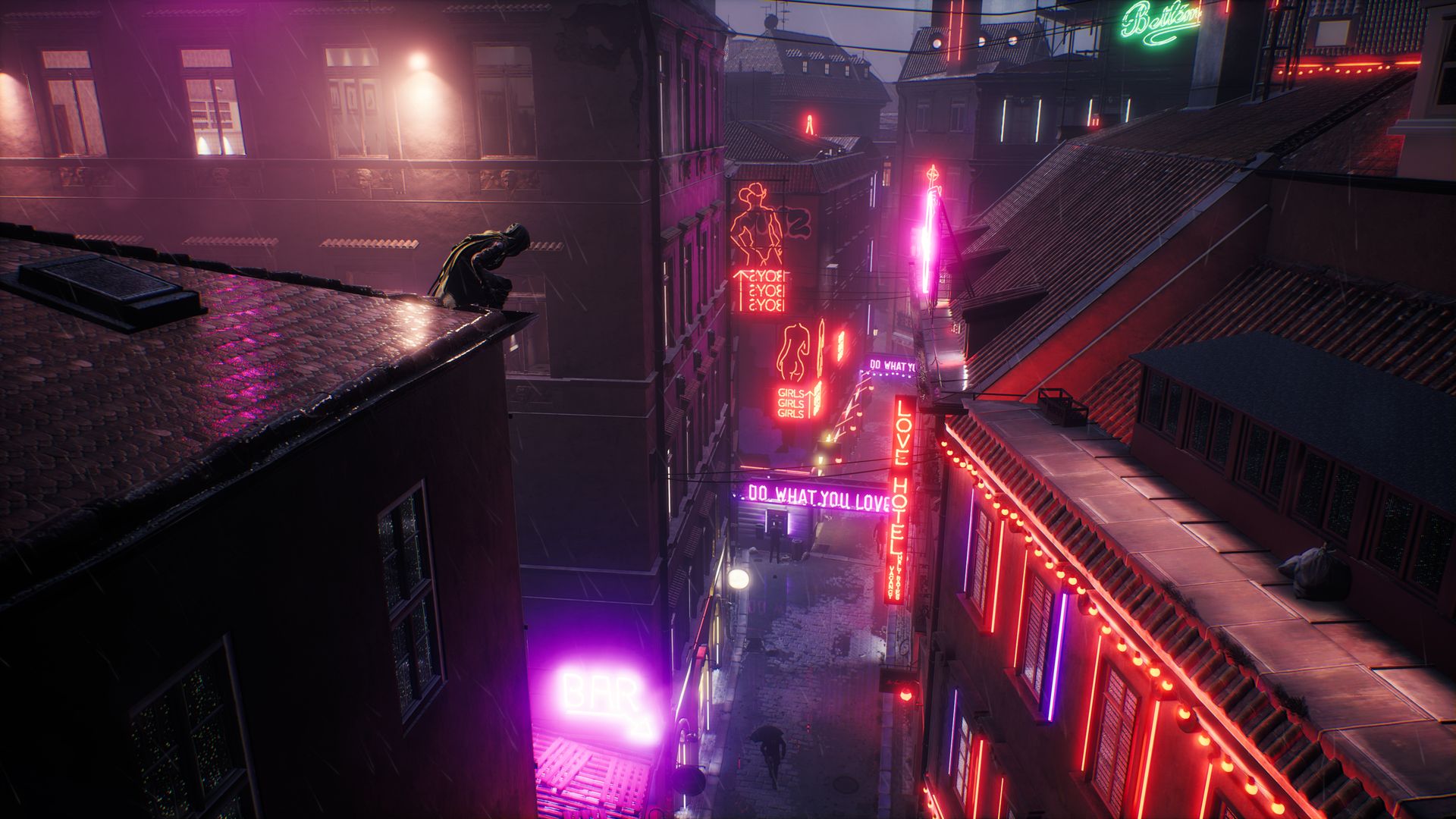Bloodhunt is doing battle royale with a Vampire: The Masquerade twist
Bloodhunt is mixing Vampire: The Masquerade with a 45 player battle royale

It’s brave for a studio to drop a new battle royale in a crowded market already dominated by games like Warzone, Apex and Fortnite, and a plethora of smaller titles carving out their niche. But Bloodhunt does have a few things to help it stand out. For one, it’s part of the Vampire: The Masquerade universe, instantly fleshing out its world with cool lore and vampy wish fulfillment. It also looks beautiful – a brooding cityscape multiplayer arena crafted with high-end single player looks, as 45 players dash across rooftops and drop to the streets below to find or avoid fights.
Building gameplay

It’s the combination of urban map design and the effortless agility of the vampire fighters that creates the most interesting dynamics in this undead turf war. Players are hugely agile; able to more or less run up the sides of buildings and leap from rooftop to rooftop. It’s a completely different feel to flatter shooters, which typically use structures and distance to help get you out of trouble. Here, the rooftops are separated by trench-like gaps carved out by the streets below to form an almost two tiered upper and lower playing field, linked by the nowhere liminal spaces of the walls you climb between them. Battles can be avoided or escaped simply by stepping off a building. And, while the rooftops are where dominance is asserted, claiming it comes via numerous smaller building to building shootouts that spill into running street battles, isolated and contained by the architecture around you.
Martin Hultberg, developer Sharkmob co-founder and studio IP and communications director, explains more: “we have a very vertical play space. So many games are flat and have lots of empty space between engagements. In many shooters you lock someone down and then flush them out with a grenade or something, and you take them out. Here you have to be very conscious about your environment. Okay, he dropped down behind that building. What's behind that building? Where should I go? Should I go on the street? Or should I go over and get him?”
The high/low changes of moving between the roofs and streets adds a tactical use of space that you don’t usually see in more mortal shooters where an unaided 10 story drop can be more problematic. “It's a lot about maneuvering and positioning,” continues Martin. “I prefer to try to ambush people and this environment is quite friendly for that – by dropping down from a ledge you can trick someone to follow you and if you position yourself correctly, then they're going to be at a disadvantage as they're coming down.” It’s something the team describes as an “interesting and unexpected effect of the vertical playspace”.
Blood ties

It might seem like an obvious tactic to stay high then, but there are incentives to drop to the streets beyond avoiding bullets. Being a vampire obviously means drinking blood, so the people below you, both in height and evolutionary status, are handy health tops ups when you’ve taken damage. There are also vans acting almost like loot crates, loaded up with gear to grab. However, the most useful draw to the streets are special humans with ‘resonant’ blood. Finding these can boost certain abilities, like healing, powers, cooldowns and so on, and while you don’t need them to win, they’re obviously an advantage. Especially as they stack, meaning spending some early match time gathering buffs can make all the difference later.
Being a vampire obviously comes with more than just blood-based healing as this is also a class-based shooter, meaning your playstyle is as much about a pre-game choice as it is finding gear in a match. Playing off Vampire: The Masquerade’s various clans, there are currently six classes; two each from the Brujah, Toreador and Nosferatu. Each roughly plays with variations of a tank, support, and stealth styles respectively.
The Brujah have abilities, such as forcefield-like shockwaves or enhanced healing, and a shared high power leap for movement. The Toreador classes use a teleport-style dash, and skills that include instant cooldown refreshes or team healing. And, lastly, the two Nosferatu classes use a vanishing move to propel themselves forwards unseen, while things like a cloaking crouch, or the power to see a trail left by wounded enemies let them hunt the opposition.
Weekly digests, tales from the communities you love, and more
Power play

It’s an interesting mixture of skills, and in the three-player team modes you can only have one of each, meaning you’ll have to master at least one of each clan. It also raises some interesting challenges to not engineer a ‘rock-paper-scissors’ win/lose situation when specific powers clash in a match. It’s something Bloodhunt is trying to avoid by ensuring the powers aren’t explicitly powerful in their own right.
“Our powers are more complimentary to the playstyle and almost utilitarian and to some point,” explains producer David Sirlend. “It is about the weapons and shooting, but the powers allow you to do that in different ways. It's very much empowering you to play in a different way, but it's not necessary. Your damage comes from weapons, essentially”.

I only played a couple of rounds of Bloodhunt so I’ve not really had enough time with it to form really hard opinions on the gameplay, but I liked what I saw. As I mentioned, it looks beautiful and there’s an interesting flow to blazing across rooftops in a hail of bullets one minute, and sulking unseen in the streets below the next. The Vampire: The Masquerade parts feel good too – from the powers that let you leap and climb around as you fight, to grabbing people in alleys to feed on. Even the lobby/vendor area, inside a cathedral area with a bit of a nightclub vibe, feels Masquerade-y. That, and the various fashion item (the target for monetization aside from a battle pass is vanity items) has just enough of that Masquerade feel of street fashion meets couture, as rough criminals and haughty nobility rub shoulders to deal with the day to day of being undead. If it can build on this initial promise when it launches later this year, there might be room for it in the battle royale rotation.

I'm GamesRadar's Managing Editor for guides, which means I run GamesRadar's guides and tips content. I also write reviews, previews and features, largely about horror, action adventure, FPS and open world games. I previously worked on Kotaku, and the Official PlayStation Magazine and website.


